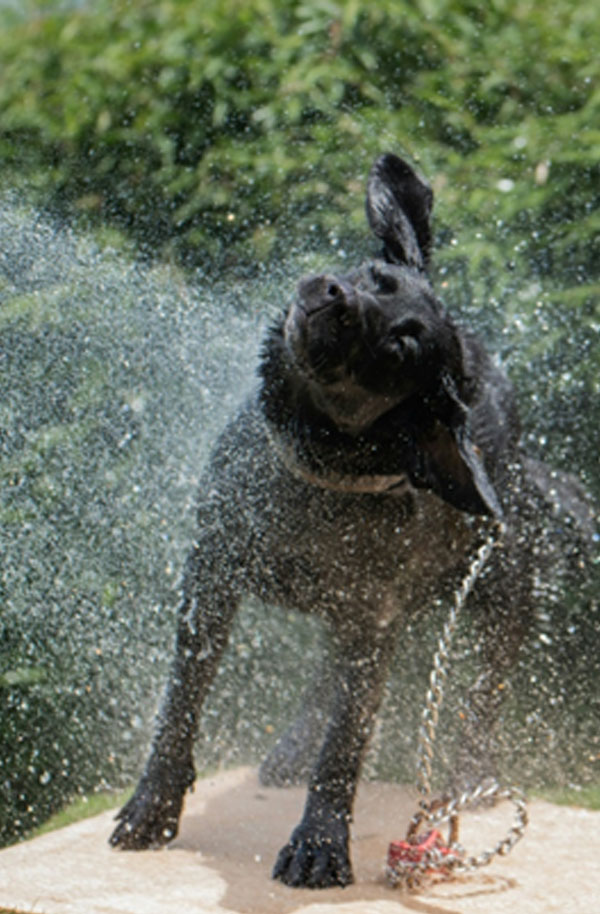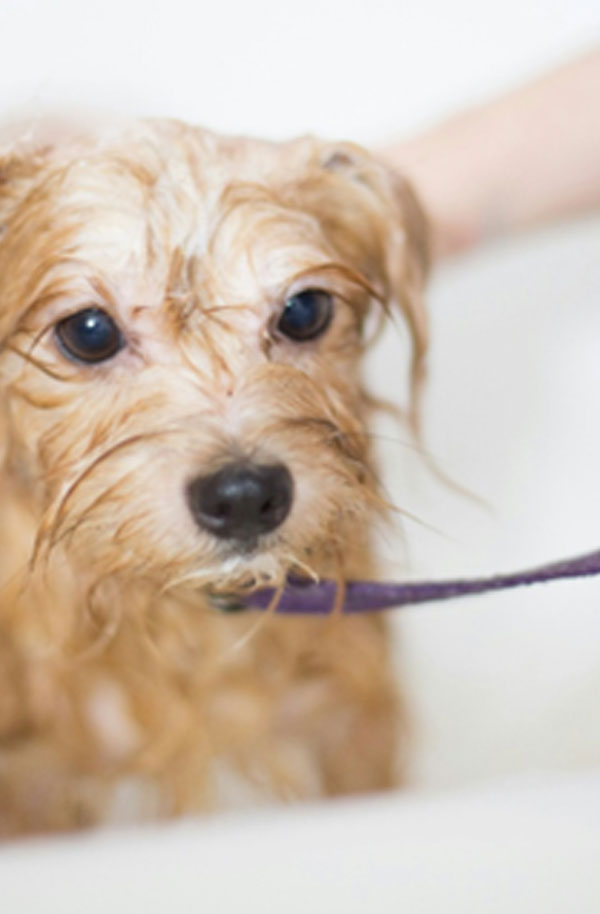Which product do you choose? Shampoo, mousse, spray or cream?
Not every animal, skin problem or owner requires the same approach. Therefore, it is valuable to properly match the product type to the situation. Maxani offers various forms of skin care - from shampoo to mousse, spray and cream - so that you as a veterinarian can advise based on skin indication, convenience and therapy compliance. Below we list the possibilities.
Shampoo - the basis for many skin problems
Waxing has been and remains an important part of the management of many dermatological complaints. Especially in itching, allergies or secondary infections a skin shampoo is often indispensable. Washing removes pathogens, toxins, allergens and flakes - and supports skin hydration.
Research shows that weekly washing can significantly reduce itching symptoms [1,2]. The ICADA guidelines (2015) also recommend regular washing in atopic dermatitis [3,4].
The Maxani skin shampoos contain mild, moisturizing and skin barrier-supporting ingredients. When used correctly, the effect is maintained for an average of 72 hours. A practical instructional video is available for owners:
www.maxani.nl/wassen
Mousse - washing without water
A mousse is a dry shampoo that allows you to clean without rinsing. This product is ideal:
- For animals (or owners) that cannot be washed easily
- As intermediate care between washes
- For topical application (e.g. between the toes, in the neck or groin)
Even with cats or rabbits, mousse is often more practical than a full wash. In addition, less body fats are removed than with wet washing - pleasant for sensitive skin types.
Spray - fast, targeted and touch-free
A spray is useful for owners who prefer not to make direct contact with the problem area. Sprays are often used with:
- Bald or thin-haired patches
- Shorthair in which can be sprayed against the hair direction
- As complement to a shampoo or mousse treatment
Sprays are quick to apply and do not need to be rinsed out. This makes them approachable to use and easy to fit into the daily routine of animal and owner.
Cream - local and intensive
A cream is highly moisturizing and emollient. Although lubrication is more difficult on animals with fur, there are plenty of situations where cream is preferred:
- Hairless spots, such as nasal bridge, ear rims, or under the eyes
- After shaving, to reduce irritation
- In case of sun damage or for protection of delicate skin parts
Creams are nourishing and can provide quick relief, especially for dry or sensitive skin areas.
Conclusion
The choice between shampoo, mousse, spray or cream depends on several factors: the type of skin problem, the location, the behavior of the animal and the owner's preference. By offering customization, you increase the chance of therapy compliance and results.
Maxani offers products in all four forms - tailored to the real world and developed with skin health, ease of use and effective support in mind.


What does science say?
Human skin has a pH of about 5.2 to 6.2 - slightly acidic, in other words. Skin care products for humans are adjusted accordingly. With dogs it is different: Their skin pH varies considerably, from 5.5 to as much as 9.1 (!), depending on breed, size and skin condition. The average pH is around 7.5, but this is based on limited research.
That means there's really no "one-size-fits-all" pH for dog shampoo. A 2011 study tested as many as 67 shampoos - both human and animal - and what did it find? There was a wide overlap in pH levels. Some dog shampoos were even more acidic or alkaline than human shampoos. The variation was even greater in animal products than in human products.
So is an acidic shampoo bad?
No, definitely not. The pH value says something about acidic or alkaline, but not directly about skin irritation. Honey, for example, has a low pH (around 3.5), but is absolutely not irritating - in fact, rather soothing. Irritation is only really seen at pH values below 3 or above 10.
Moreover, several studies show that a somewhat more acidic environment can help dogs' skin recover, precisely for skin problems. So it is not as black and white as is often thought.
But why not use human products anyway?
Good question. Here's the thing: The skin of dogs and cats is thinner than that of humans. As a result, certain substances can cause faster irritation or even damage. Also, some ingredients in human shampoos, such as zinc oxide, are downright toxic if animals ingest them. Consider, for example, what happens when your dog licks himself after shampooing
In addition, pet shampoos are often stronger in terms of cleansing (dogs do get dirtier), and are tailored to specific skin problems in animals. In the end, that does make them the better choice - but not necessarily Because of pH.
Conclusion: don't be fooled by pH
The story that an animal product must knocking in terms of pH is largely based on marketing, not hard science. The real reason to use an animal shampoo is in other things: safety, efficacy, and avoidance of harmful substances.
So: stay critical, ask questions, and choose products that are really good for the animal - not just because the label says the pH is "perfect."

